
Ceramium is a genus of Ceramium algae. It is a large genus with at least 15 species in the British Isles.
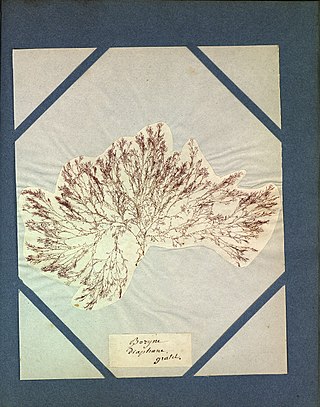
Ceramium diaphanum is a species of marine red algae.
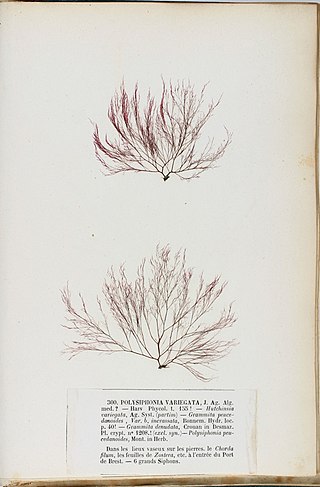
Polysiphonia denudata is a small red alga, Rhodophyta, growing as tufts up to 20 cm long without a main branch axis.
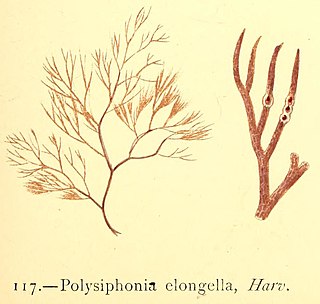
Polysiphonia elongella Harvey in W.J. Hooker is a branched species of marine red algae in the genus in the Polysiphonia in the Rhodophyta.
Polysiphonia fibrata is a species of Polysiphonia that grows as small dense tufted and finely branched marine alga in the Rhodophyta.

Melanothamnus harveyi, Harvey's siphon weed, is a small marine red alga in the division of Rhodophyta.
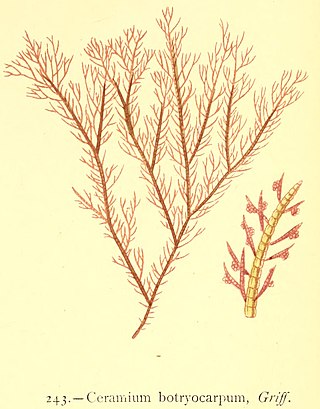
Ceramium botryocarpum is a small red marine alga in the Division Rhodophyta.
Ceramium flaccidum is a small red marine alga in the Division Rhodophyta.

Ceramium ciliatum is a small marine red alga in the Division Rhodophyta.
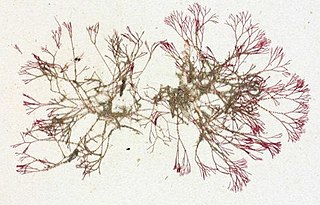
Ceramium cimbricum is a small red alga in the division Rhodophyta.
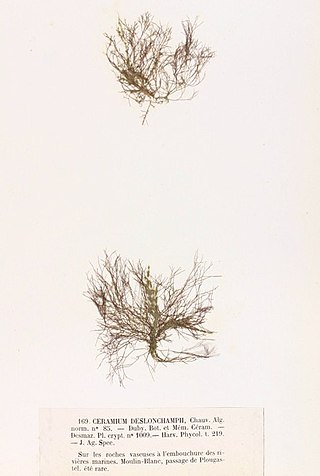
Ceramium deslongchampsii is a small marine red alga in the Division Rhodophyta.

Ceramium gatitanum is a small marine red alga.
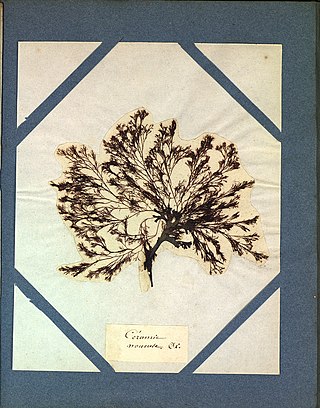
Ceramium nodulosum is a small red marine alga. There is confusion surrounding this name.
Ceramium secundatum is a small marine red alga.

Ceramium shuttleworthianum is a small marine red alga.
The taxon Ceramium siliquosum is a small marine alga. It belongs to the red algae genus Ceramium.
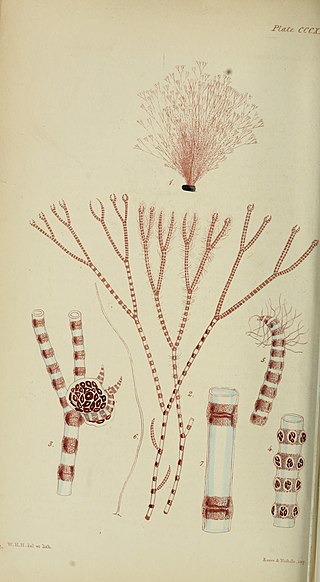
Ceramium strictum is a small marine red alga.
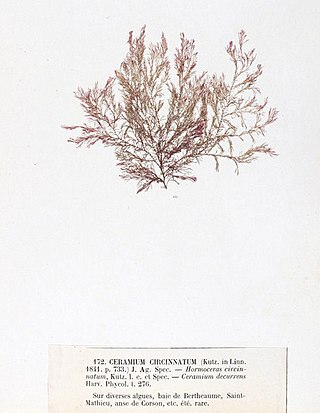
Ceramium circinatum is a small marine red algae.

Ceramium virgatum, or the red hornweed, is a small red marine alga.
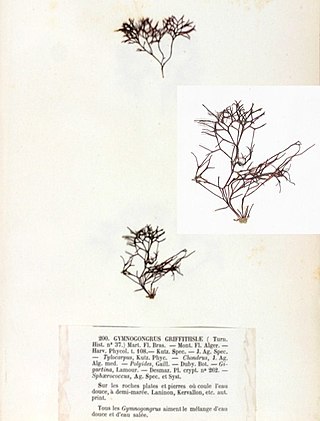
Gymnogongrus griffithsiae is a small uncommon seaweed.














